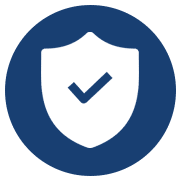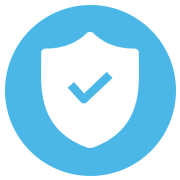Suppliers throughout the US Defense Industrial Base are struggling to understand and comply with the federal CMMC mandate. Particularly for suppliers with minimal technical resources, CMMC security requirements can be challenging and potentially expensive to satisfy.
Secentric’s CMMC L1 Policy Suite has been developed exclusively to help you navigate CMMC requirements affecting our business and establish practical safeguards necessary to fulfill your CMMC compliance obligations.

New to Secentric? See how it works:
Try for Free

More than a CMMC Policy Template, Secentric’s CMMC L1 Policy Suite includes consultative guidance to help you understand the implications of your policy decisions and helpful tools to support your CMMC compliance journey.
We offer CMMC L1 guidance and solutions for growing teams. Let us help you develop your CMMC policies and programs.
Complete your policy in as little as 30 minutes!
The U.S. Department of Defense (DoD) relies on its vast network of partners, contractors, and suppliers (the defense industrial base) to faithfully execute many of its duties and responsibilities. But with more than 50,000 companies with DoD contracts, how can the federal government ensure that all these partner organizations treat confidential and restricted information with the sensitivity it deserves?
Cybersecurity frameworks such as the CMMC (Cybersecurity Maturity Model Certification) are intended to bridge the gap between the DoD and its supply chain. So, what is the CMMC, and what does it mean for businesses to be CMMC-compliant?
The Cybersecurity Maturity Model Certification (CMMC) is a cybersecurity framework and certification program for defense contractors. The CMMC was established by the U.S. Department of Defense (DoD) to secure the federal government’s defense industrial base (DIB). Much of the CMMC was adapted from other U.S. federal government cybersecurity frameworks, such as Federal Information Processing Standards (FIPS) 200 and NIST SP 800-171.
The CMMC was first released in January 2020, while the latest version—CMMC 2.0—was launched in November 2021. CMMC 2.0 is intended to streamline and simplify many of the requirements for small and medium-sized businesses and improve the model’s flexibility and reliability.
According to the CMMC, cybersecurity processes and best practices can be classified into one of 14 domains (reduced from 17 in CMMC 1.0):
By adhering to the CMMC, DoD contractors and their supply chain can ensure that they meet a “minimum standard of care” to handle sensitive data and manage security in their IT environment. This is known as CMMC compliance.
The CMMC has three certification levels (reduced from the initial five).
Level 1 (L1) is the fundamental level of CMMC compliance. CMMC L1 includes 17 basic techniques across the domains of:
L1 enforces cybersecurity best practices such as limiting physical access to IT hardware, ensuring user authentication, patching software vulnerabilities, and more.
CMMC Level 2 (L2) and Level 3 (L3) place more stringent requirements on DoD contractors:
Level 2 (L2) includes 110 techniques aligned with the NIST SP 800-171 framework and requires organizations to undergo a third-party security assessment every three years.
Level 3 (L3) includes additional techniques aligned with the NIST SP 800-172 framework and requires organizations to undergo a government-led security assessment every three years.
The level of CMMC compliance that the defense industrial base must fulfill will depend on the individual contract. By the end of the fiscal year 2025, however, all DoD contractors and their supply chain must be CMMC-compliant to continue receiving U.S. federal contracts.
Given how recently the CMMC was introduced, it’s entirely understandable that companies may not yet have all the answers. Indeed, many U.S. defense contractors and their supply chain struggle to understand and comply with the federal CMMC mandate. CMMC security requirements can be challenging and potentially expensive to satisfy, especially for suppliers with minimal IT resources, budget, or knowledge.
Are you in search of the right CMMC guidance? The good news is that partnering with the right cybersecurity provider—a skilled, experienced cybersecurity provider like Secentric—makes it much easier to conform to the CMMC framework.
Here at Secentric, we believe that cybersecurity shouldn’t be a pain, mystery, or burden. Our driving motivation is to help our clients:
Secentric’s CMMC L1 Policy Suite is the best, easiest, and most budget-friendly way to get started with CMMC compliance. The CMMC L1 Policy Suite has been developed exclusively to help you navigate the CMMC requirements affecting your business and establish practical safeguards necessary to fulfill your CMMC compliance obligations.
The benefits of using Secentric’s CMMC L1 Policy Suite include:

More than just a CMMC Policy Template, Secentric’s CMMC L1 Policy Suite includes clear, consultative guidance to help you understand the implications of your policy decisions, as well as helpful tools to support your CMMC compliance journey.
Secentric has a wealth of experience helping our clients meet the requirements of cybersecurity frameworks, from HIPAA and PCI to NIST CSF, NIST 800-53, and more. We offer CMMC L1 guidance and solutions for growing teams.
Want to know how we can help you develop your CMMC policies and programs?
Get in touch with our team of IT security experts today for a chat about your business needs and objectives. You can also click below to buy the CMMC L1 Policy Suite and get a head start on your DoD cybersecurity obligations.
Short List of controls from Aaron:
Use of External Systems
Identity and Access Management
System Lifecycle Management
Vulnerability Management
System Security Protections
Network Security Protections
Physical Security Protections
Long List of Controls:
Access to External Systems
Antimalware Protection
Approved Asset Inventory
Approved External Systems
Authenticated Access
Dedicated Administrator Accounts
Default Passwords
Network Boundary Defense
Network Boundary Inventory
Inactivity Lockout
Media Sanitization
Physical Access Control
Physical Access Logs
Physical Security
Posting Publicly Accessible Data
Safeguards for Removable Media
Secure Configuration Standards
Segmentation of Publicly Accessible Systems
System Access Controls
Unused and Unassociated Accounts
User Identification
Visitor Access
Vulnerability Management
Wi-Fi Segmentation
Copyright 2023 Secentric, Inc.
All rights reserved.